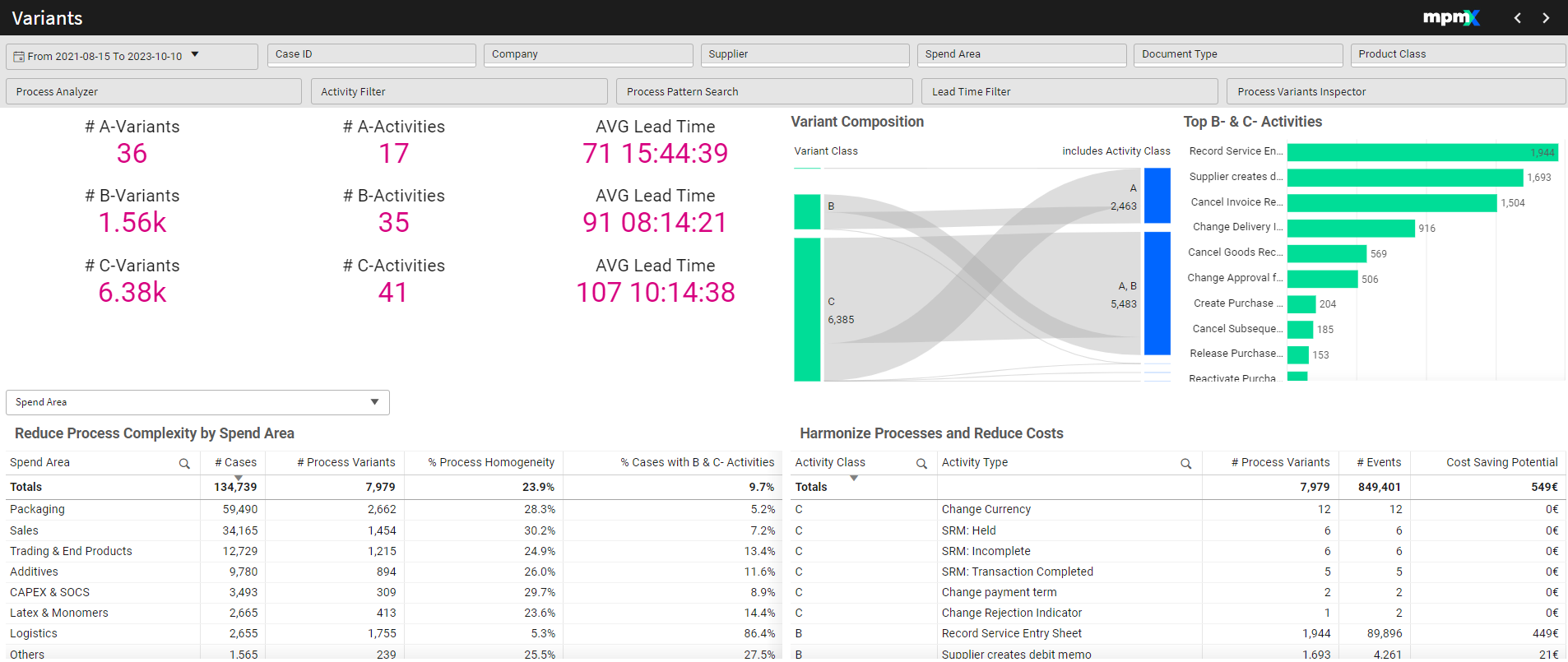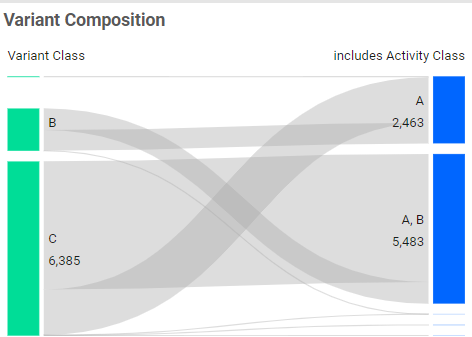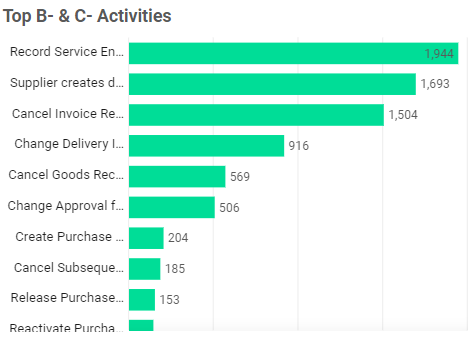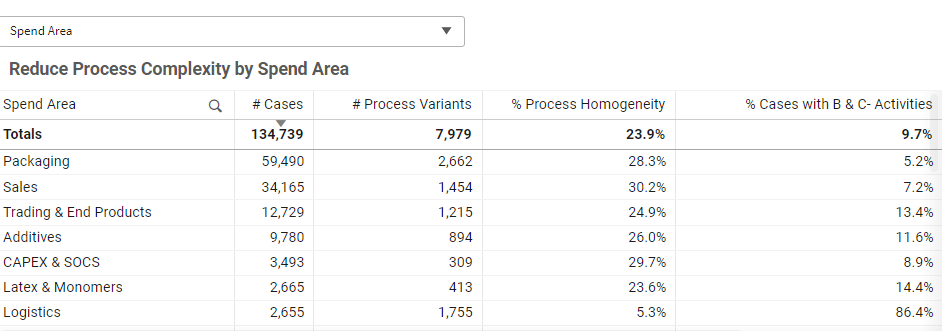Variants

Type: Dashboard
This dashboard is used to understand process complexity and to distinguish primary from secondary processes. If your process looks like spaghetti in the process analyzer, then this sheet is a good place to reduce complexity and get a better understanding of the process.
Functions
-
ABC Analysis of process variants
-
Quantify process complexity and its necessity
-
Categorize activities into A, B and C classes regarding their "first occurrence" process variant
-
Identify and separate core (A) and noncore (B & C) process steps
-
Analyze variant composition to derive harmonization measures
-
Flexible Analysis by any given process context to validate most effective automation measures
Business Benefits
-
Quickly quantify process complexity and its necessity
-
Facilitate overall process flow
-
Reduce noncore process steps
Interpreting the Visualizations
Key Figures

ABC Analysis for Variants
- A-variants are the most common process variants that make up 80 percent of all cases. In the process analyzer, use the + symbol to increase the number of variants until you reach 80% of all cases and that number will match this PPI.
- B-variants are those variants that cover the next 15% of cases (or from 80-95% of all cases in the process analyzer)
- The last 5% of cases are covered by the C-variants
- When there are lots of B- and C-variants in the process, it indicates a highly complex process.
ABC Analysis for Activities
- A-Activities: The number of distinct activities that are included in all the A-Variants.
- B-Activities: The number of distinct activities that show up in the B-variants.
- C-Activities: The remaining distinct activities that only show up in the C-Variants.
- B- and C-Activities do not belong to the core process.
ABC Analysis for AVG Lead Time
- A-Variants LeadTime: When a case is an instance in an A-Variant, this is the average length of time to complete.
- Similarly, cases that belong in the B- or C-variants have their average length also shown.
- Since process complexity has an impact on lead time, expect a reduction in lead time if the number of variants are reduced.
Variant Composition Chart

- A-Variants only include A-Activities
- B-Variants can include both A and B activities. B-Variants can be made up of only A-Activities when they have a unique combination/sequence not covered in the A-Variants.
- C-Variants can include A, B, and C activities.
- Reducing the number of B or C activities will reduce the number of variants and therefore reduce complexity in (simplify) the process.
- Select in the chart to filter further.
Top B- & C-Activities Bar Chart

- This shows the most common B activities and C activities. These may highlight change activities (or rework) that can be reduced or a new undesired step to try to avoid.
- Select in the chart to filter further.
Reduce Process Complexity by (Dimension) Table

- Use the dropdown to select a dimension and see related metrics.
- Sort by column to find the examples e.g. with the largest number of cases or largest number of variants.
- % Process Homegeneity: Used to measure the consistency and uniformity within a process. The more cases covered by a single variant, the higher the homogeneity percentage. If you have one process variant that covered all the cases for that dimension value, then the process homogeneity would be 100%.
- % Cases with B & C-Activitites: This number should be low.
- Sort by column to find insights.
- Select in the table to filter further.
Harmonize Processes and Reduce Costs Table

- Sorts Activities by A, B, or C and shows related metrics.
- Look for undesirable activities that appear in many variants or events as a place to start reducing complexity.